This interdisciplinary psychologist explores mind-body problems, studies brain function and more at one go
Belonging to neither discipline, but relevant everywhere is the crux of cognitive scientist Dr Varsha Singh’s work, where engineering students tweak machines to measure brain activity, biology students find links between mood disorders and cognition, and psychologists study how a patient’s cognitive abilities are affected by diseases or injuries — all under her watchful eyes
By Nishtha Bhargava
| Posted on December 12, 2023
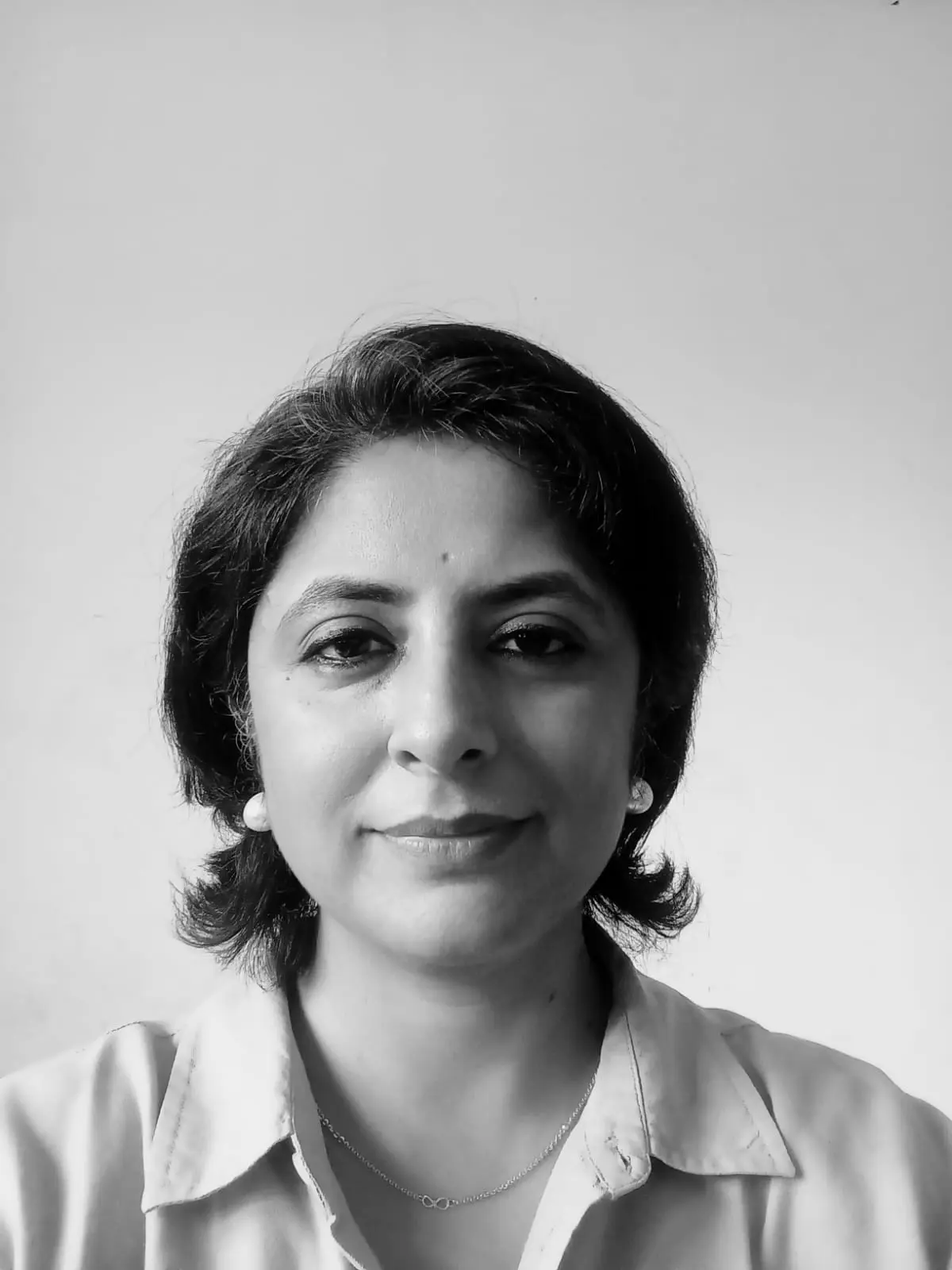
Imagine a psychologist and a mechanical engineer/economist working together, or a psychologist in a management institute. If you are still guessing about their work, you will be puzzled to learn about Dr Varsha Singh (46), an associate professor of psychology at the Indian Institute of Technology Delhi (IIT-D).
Born and raised in Pune, Dr Singh always had a natural inclination towards reading and observing the world around her, though her family was “purely non-academic, conventional and religious”, with her father serving in the police and her mother a homemaker.
She trained in kathak and science and grew up with two brothers, whose experience of the family was very different from her own. A huge extended family made a fertile ground for her sagacity regarding the variation in human behaviour, even in the same environment.
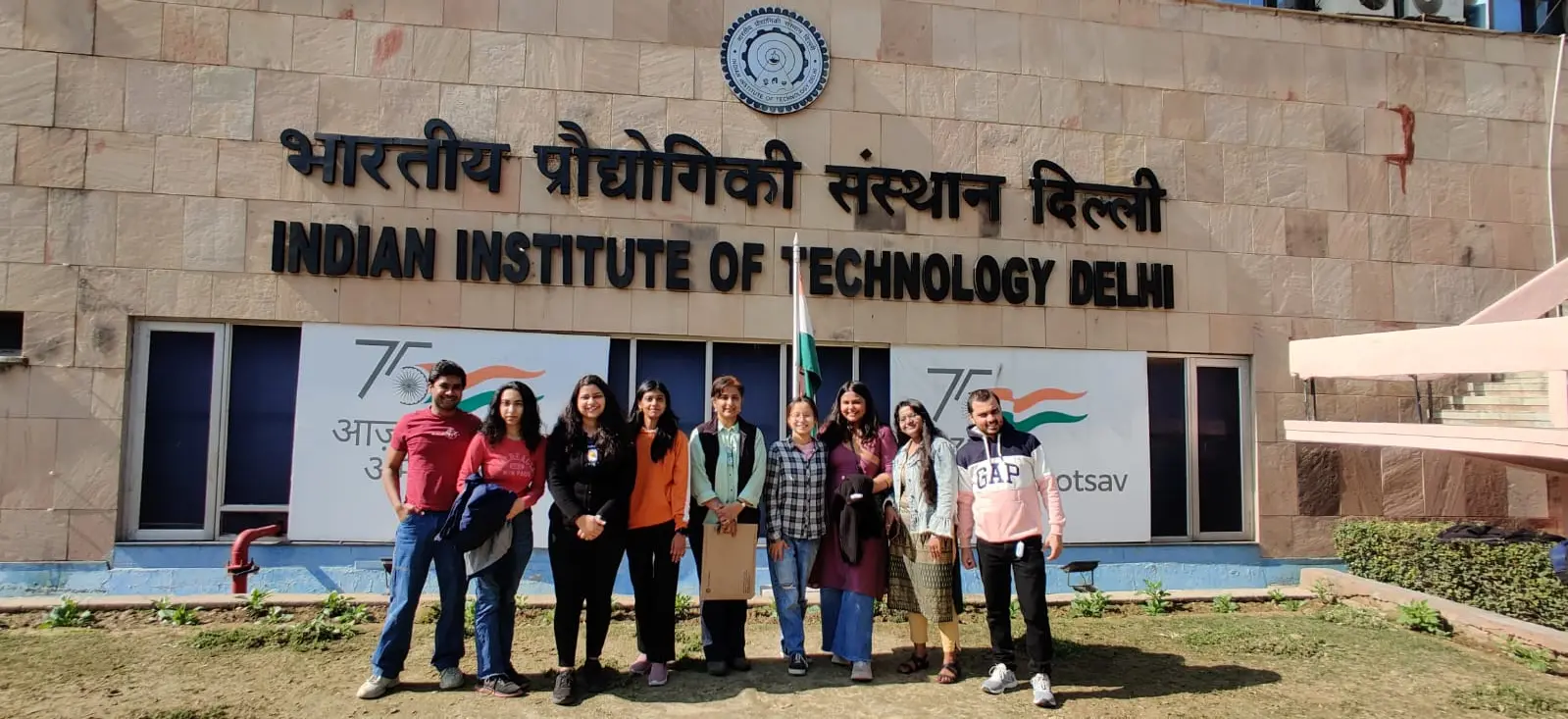
This cognitive scientist’s workspaces are scattered across IIT-D and AIIMS New Delhi, where she works with engineers, biologists and psychologists
Dr Singh entered into the field of psychology — a humanities/arts subject — after faring well in science at school. She went on to earn a PhD at IIT Bombay. The credit for fanning the flame of curiosity belongs to her many wonderful teachers, Fergusson College, and the British Library where she would immerse herself in the world of infinite knowledge. International students in the college exposed her to myriad human perspectives and experiences.
Officially belonging to the Department of Humanities and Social Sciences, this cognitive scientist’s workspaces are now scattered across IIT-D and AIIMS New Delhi. Engineering students tweak machines to measure brain activity, biology students find links between mood disorders and cognition, and psychologists study how a patient’s cognitive abilities are affected by epilepsy and other diseases or injuries — all under her watchful eyes. “It is not easy; you have to study twice and work twice or thrice as hard to fulfil the rigorous standards of two separate disciplines,” she cautions.
An interdisciplinary researcher belongs to neither discipline, yet shoulders the responsibility of correctness and relevance for both. “I do not mind doing it. It is so much fun; it excites me to watch even the most subtle bit of information come up after the hard work.” When interdisciplinarity tests her limits, Dr Singh’s intrinsic curiosity to understand the variety in human behaviour and what drives it motivates her.
Does she get requests to collaborate for studies on the effects of breathing, meditation or yoga, now that mindfulness is such a buzzword? Yes, but not all mind-body questions have answers. The effects of yoga and meditation on the mind are too complex to be measured by quantitative techniques of cognitive psychology. So, many projects do not take flight. Nevertheless, in order to make significant progress or impact, it is imperative to use proven methods to solve new problems, she says.
As much as psychology can intimately inform real life, it is hard to find participants to study the most pertinent questions for ethical reasons. Dr Singh then resorts to animal models and initiates collaboration with biology labs. Similarly, exclusive reliance on self-report measures for understanding stress poses a problem of denial and desirability (people do not want to acknowledge or admit to experiencing stress). She then draws upon the collaboration with life science labs to examine saliva samples to determine stress hormone (cortisol) levels.
The laboratory provides a controlled environment necessary for the robustness of outcomes, besides solving the gender gap prevalent in research of this nature. In the lab, both male and female baby mice can be monitored, while we may not get an equal number of subjects of either sex in the real-world scenario. In fact, the underrepresentation of female subjects is a major challenge in the field of psychology and cognitive science.
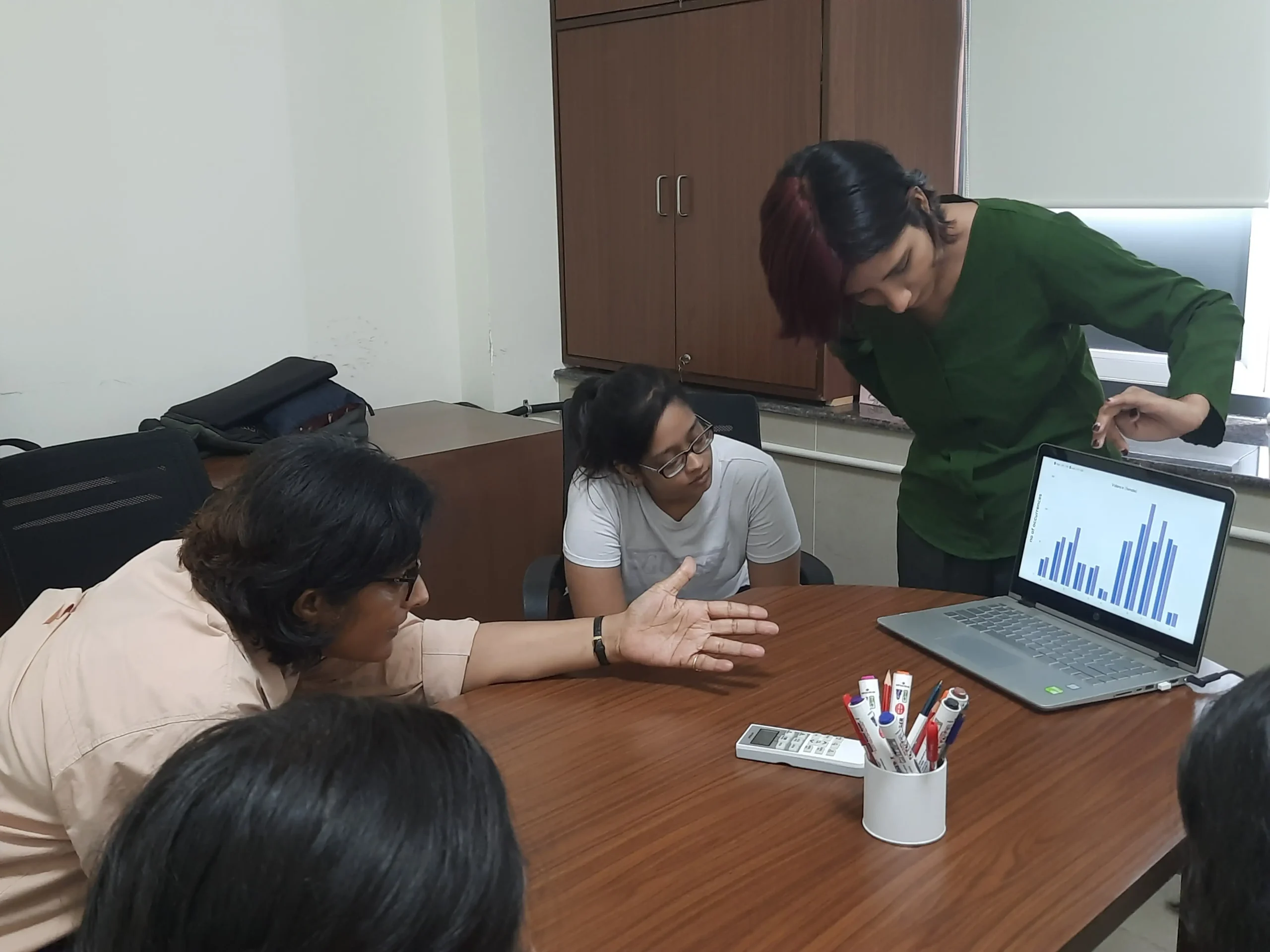
In the very first independent investigations of her career, Dr Singh gauged the effectiveness of the national-level Common Aptitude Test (CAT)
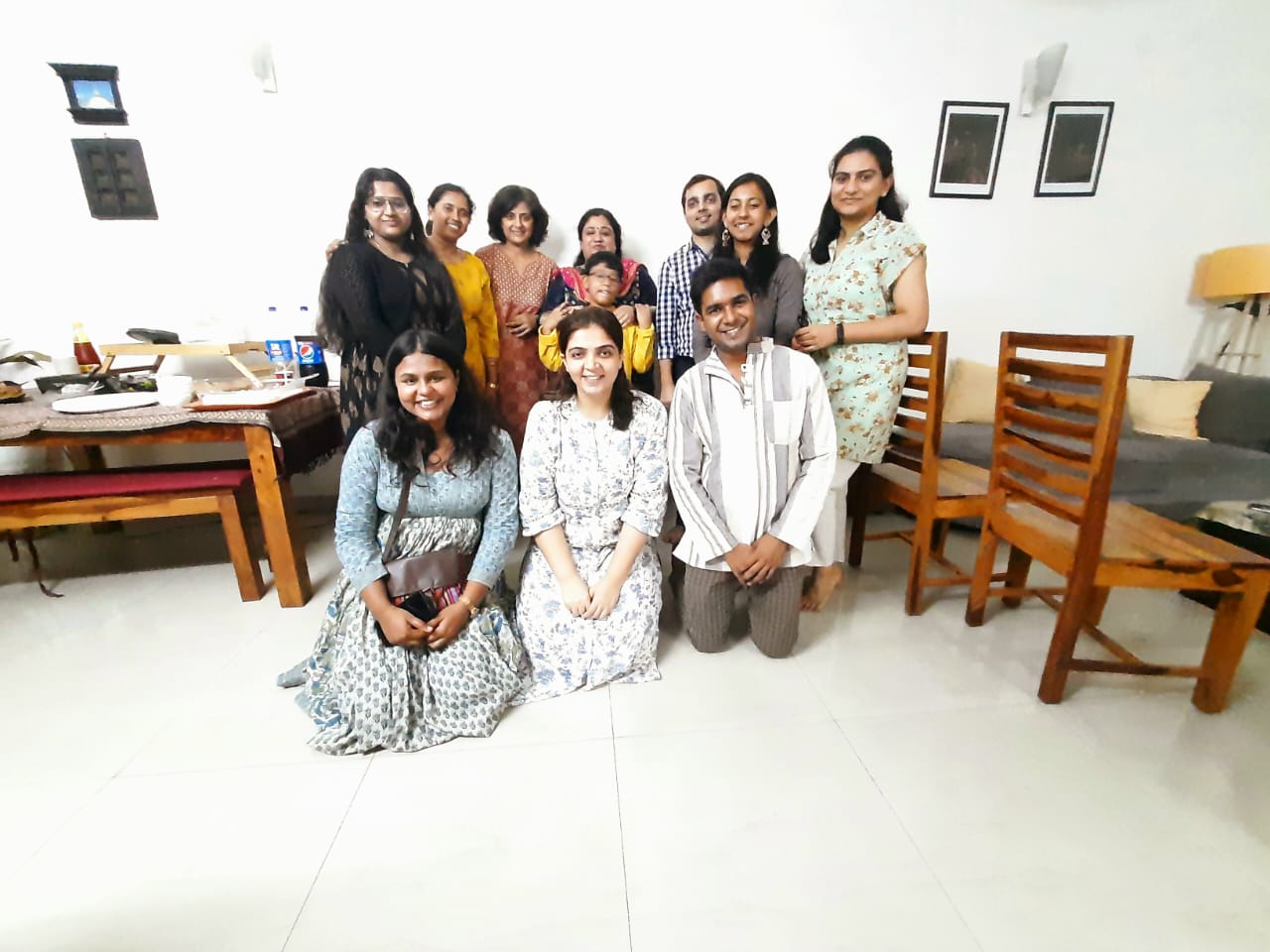
Dr Singh’s own students admire her dark humour and share her love for (dark) coffee, sometimes visiting her home for elaborate meals together
Sex differences in cognition and physiology are sensitive areas of research. “It is politically loaded… we have to be very careful not to let misinterpretations seep in. That the biology of males and females is different is beyond doubt. But when such differences are found at the level of their brain function or cognition, the implications, and thus repercussions, could be much more far-reaching,” Singh treads cautiously.
In the few very first independent investigations of her career, Dr Singh gauged the effectiveness of the national-level Common Aptitude Test (CAT), the IIM entry mechanism, at the Indian Institute of Management, Kozhikode. The performance and placement outcomes of candidates were correlated to their initial CAT scores. Could CAT scores predict placement outcomes? Yes and no.
People with high CAT scores did well in quantitative courses that rely on working memory but this did not translate to higher pay packages. Instead, performance on the qualitative courses that demanded problem-solving skills and a holistic perspective (big-picture thinking) was a more accurate predictor of the pay scales offered during placements. Additionally, Dr Singh noticed that females tend to perform better in qualitative courses because they draw more from nuanced thinking.
Better working memory and better problem-solving skills are two distinct abilities considered as two of the four modules of any cognitive processing, but tests, specifically multiple-choice questions, tend to rely more heavily on working memory than other domains. Incidentally, males and females have disproportionate capabilities in these two domains. To be inclusive, tests could have proportional reliance on domains other than working memory.
Genders show differences in risk-taking behaviour as well. It might feel intuitive that women would avoid risks, while men would be prone to cheating on exams or what experimental economists call partner-deception. However, unlike the Western developed countries, there are fewer studies addressing deception and cheating in the Indian population.
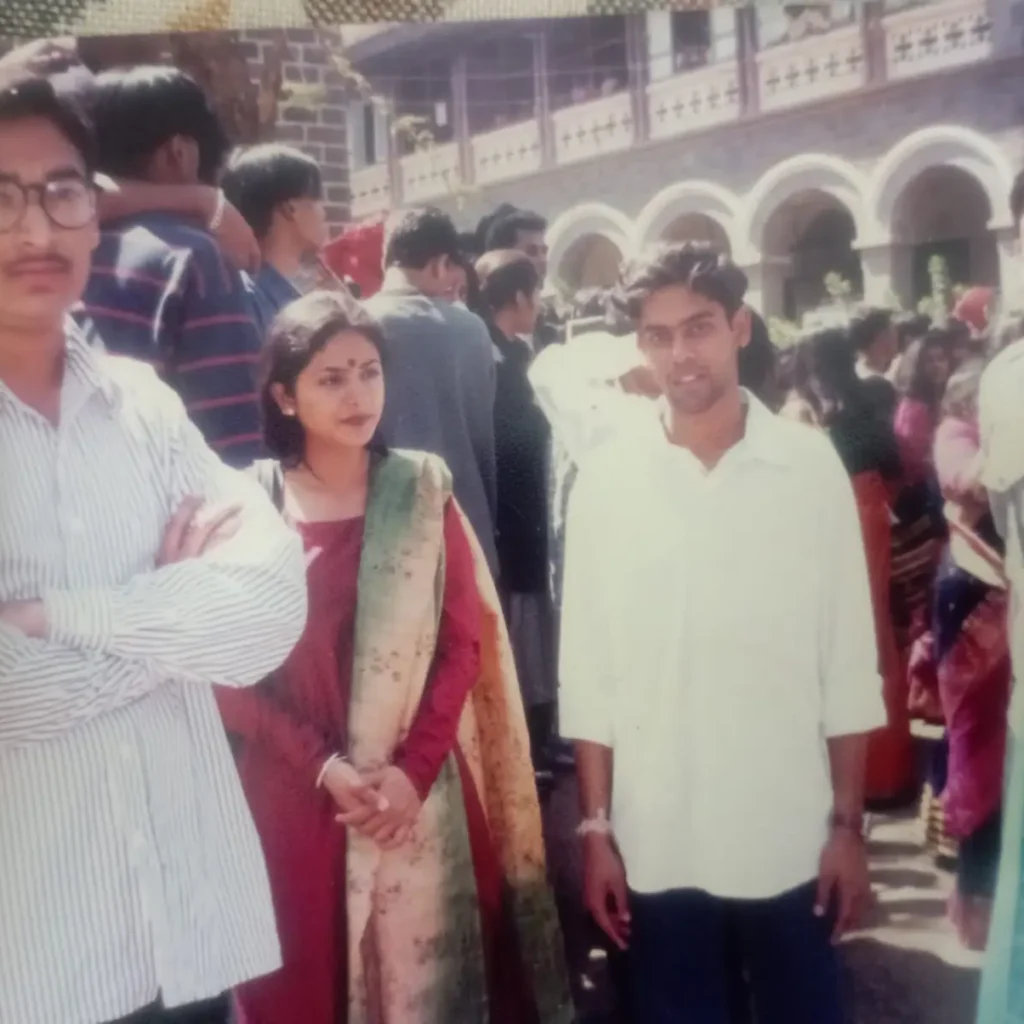
At Fergusson College, wonderful teachers and international students exposed Dr Singh to myriad human perspectives and experiences
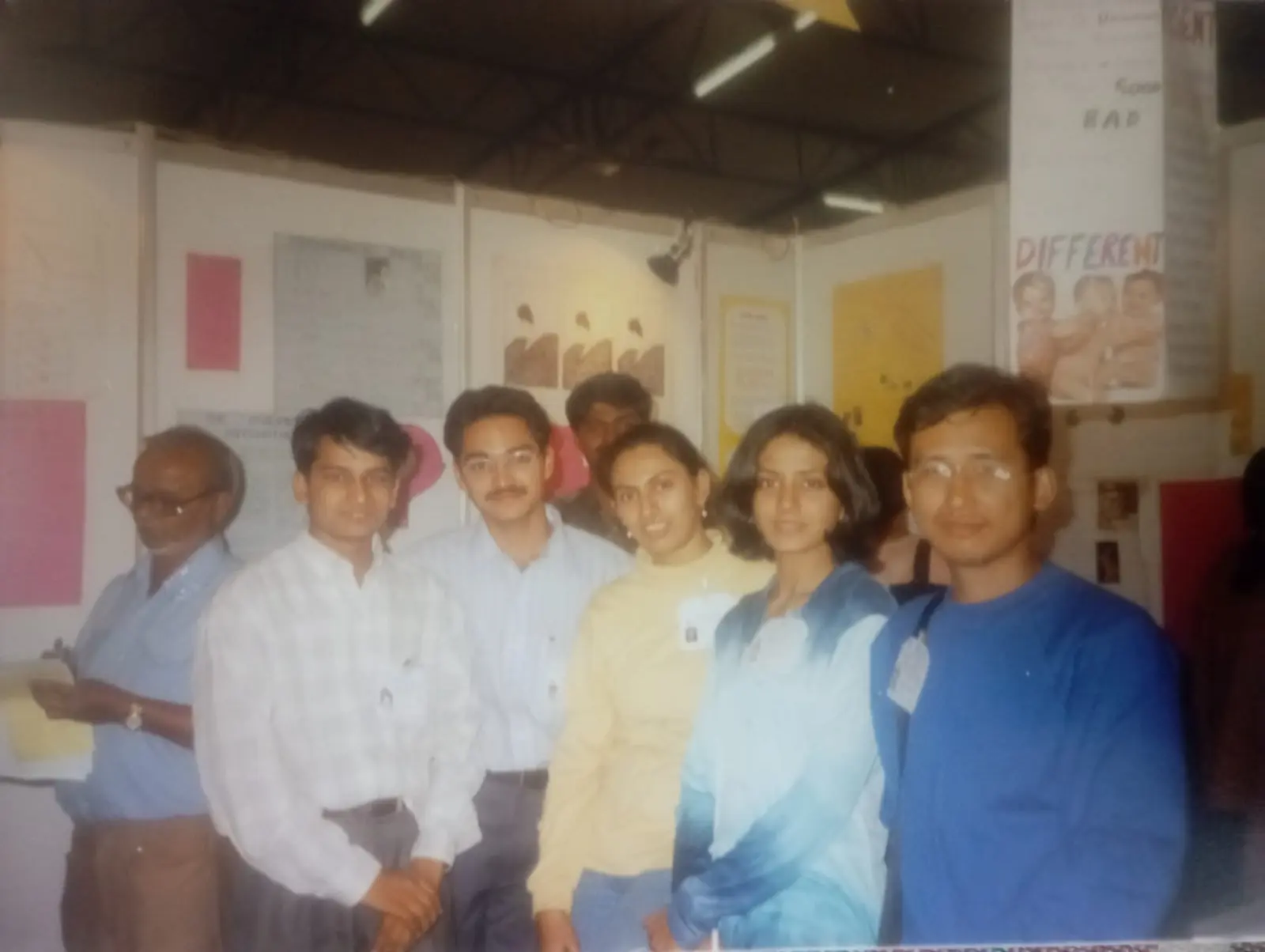
At the Indian Science Congress in 1998
Dr Singh studied gambling behaviour during her PhD, and her interest in risky behaviour like deception (lying) led her to perform her own analysis on pooled data from the West, but it was not clear what the origins of those differences were. Was it social conditioning, or the need to survive? Could it be rooted in psychology or physiology? If both, then in what measure? Her research suggests that hormonal differences between the sexes may affect decision-making, especially information processing related to risks-rewards, as is seen in certain rodent studies.
Although the above studies were possible because female subjects were available, Dr Singh was not always that lucky. Female participation for her ongoing sleep deprivation study was near impossible. “We needed to monitor them at 2.30 am, so no one agreed. We tried giving money, but it did not work. Even those staying in hostels did not participate.”
Dr Singh then spoke with multiple small groups of women to make them realise how the effects of prevalent prescription drugs on female physiology remain unknown due to the lack of women participants in trials. The side effects of drugs come to light after women in large numbers suffer after using them. Such relatable discussions convinced more to participate. “Small wins,” she says humbly.
Despite the relevance of her investigations and a steady flow of grants, Dr Singh faces a high attrition rate among PhD scholars. “Demanding more from my students is my way, though maybe dysfunctional, to prepare and protect them [against future challenges]; you can neither bypass the journey nor rush it,” she reasons.
The higher standards are applicable furthermore because of the interdisciplinary nature of the work — these are riskier zones where higher and more niche validations must be sought, for example, in international conferences. Of the many valuable things Dr Singh guarantees are unquestionable training and abundant learning opportunities. “I do everything in my power to retain a girl student.”
“So now, after trying to convince new students how cool and amazing this work can be, I am starting to tell them early on to go find what gives them joy, where they would want to burn the midnight oil and do that instead of toiling miserably in research,” she adds.
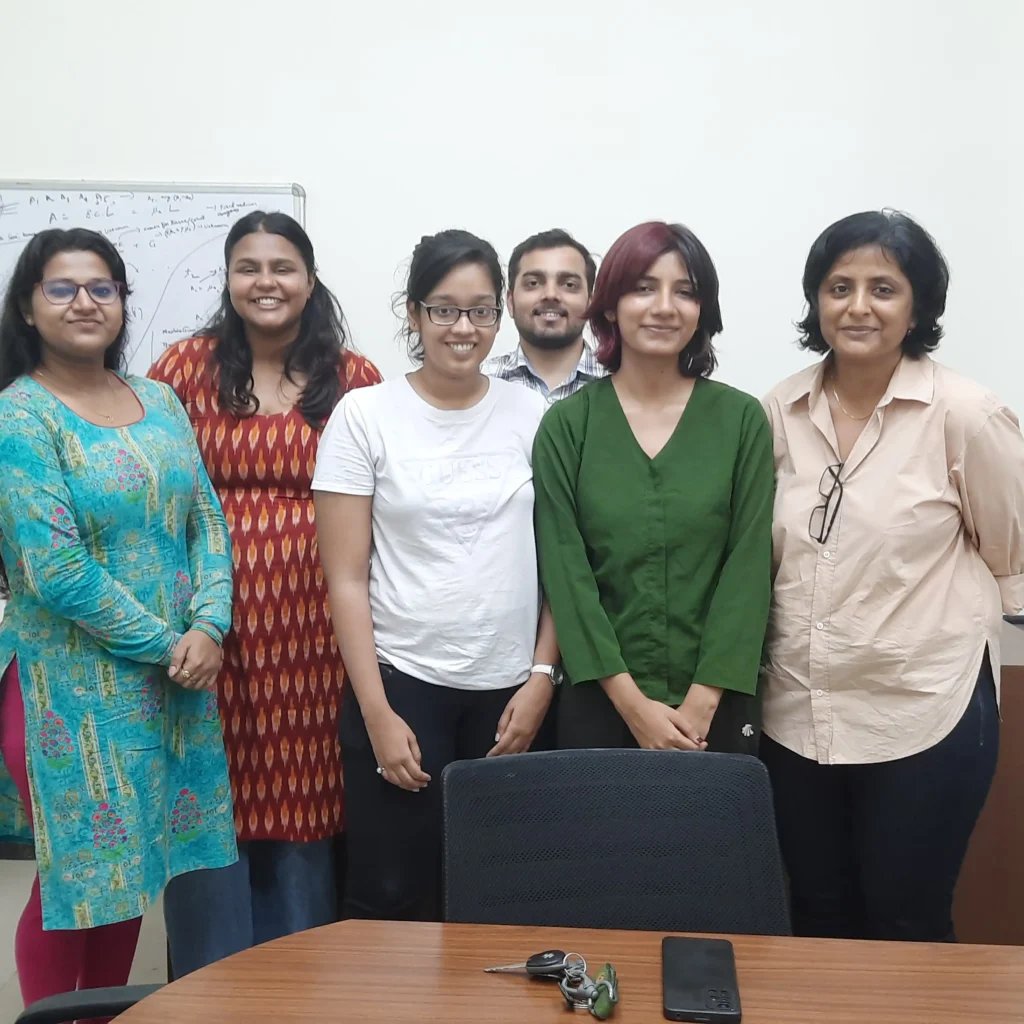
“I do everything in my power to retain a girl student” – Dr Singh pictured here with her group
Managing expectations through honest discussions and formal Q&A is on the top of Dr Singh’s list. Academia — a field largely governed by ethical principles — helps her choose her work in ways that enable a fulfilling work life. All the undesirable spill-overs that research brings into her personal life as a single mother are over-compensated by the simple and stable life and the privilege to live on a safe, beautiful campus, giving her twin sons a hopeful picture of the world, where their will is above all.
“She is this knowledgeable, funny, incisive and sarcastic person who displays this refreshing intellectual honesty,” remarks Dr Sujoy Chakravarty, a behavioural economist at the Jawaharlal Nehru University and Dr Singh’s collaborator of nine years. Dr Singh has been instrumental as a co-guide in some of Dr Chakravarty’s PhD students’ work, which includes gender-based differences. “She is a true argumentative Indian,” he adds, “but insightful in an unconventional way”, which he ponders is possibly a product of her non-mainstream training trajectory.
He describes Dr Singh as one of the most self-driven, quality-conscious and rigorous scientists he works with. During academic argumentation, sometimes she is the one “taking the more rational economic stance and me taking a more affective, behavioural stance. We always joke that I am the closet psychologist and she is the closet economist,” he quips.
Dr Singh’s own students admire her dark humour and share her love for (dark) coffee, sometimes visiting her home for elaborate meals together. Yes, she can be very tough, but her care more than makes up for it.

About the author
Nishtha Bhargava is a life science researcher exploring ways to communicate science to the public. She left a permanent job in a public sector bank to pursue a doctorate in life science. Through the course of her PhD it became clear to her that she has a knack for making scientific concepts easy to understand, which she put to use in outreach activities on campus, and then, in writing. She supports equal rights, inclusivity, diversity and good mental health practices, believing that empathy-driven rigorous science has the power to change the world.

Add a Comment